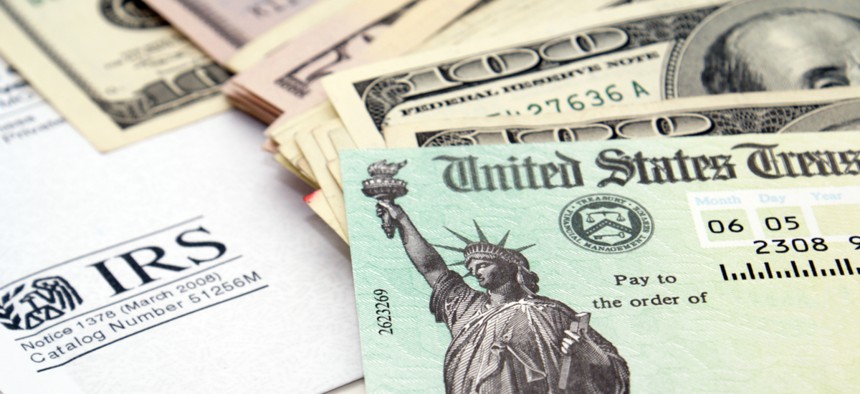In a 1031 DST exchange, the tax deferral mechanism operates under Section 1031 of the U.S. Internal Revenue Code, which allows real estate investors to defer paying capital gains taxes when they sell an investment property, provided the proceeds are reinvested into a “like-kind” property. A Delaware Statutory Trust (DST) qualifies as a “like-kind” property for this purpose, even though it represents a fractional interest in real estate.
Here’s how the tax deferral works step-by-step in the context of a 1031 DST exchange:
- Sale of the Original Property
- When an investor sells their original property (known as the “relinquished property”), the sale typically triggers capital gains taxes on any appreciation in value, depreciation recapture, and possibly state taxes.
- However, under a 1031 exchange, if the investor does not take possession of the proceeds (i.e., they are held by a Qualified Intermediary), they can defer these taxes.
- Reinvestment into a DST
- To maintain the tax deferral, the investor must reinvest the proceeds from the sale into a “like-kind” property. A DST, as a legal entity that holds real estate, qualifies as such.
- Investors purchase a fractional interest in the DST, which owns large properties (like commercial buildings, multifamily units, or other institutional-quality assets). The investor’s interest in the DST is considered ownership of real estate for 1031 purposes, allowing the tax deferral to continue.
- Deferral of Capital Gains Taxes
- Capital Gains Taxes: These are taxes on the profit made from the sale of the relinquished property. By reinvesting in a DST through a 1031 exchange, the investor defers these taxes indefinitely until a future taxable event, such as when the DST property is sold or the investor chooses to cash out.
- Depreciation Recapture: Depreciation deductions taken over the years on the original property are subject to recapture at a 25% tax rate upon sale. This tax is also deferred in a 1031 exchange when reinvested in the DST.
- State Taxes: If the sale occurs in a state with capital gains taxes (like California), these state-level taxes are also deferred as part of the 1031 exchange when the DST is used as the replacement property.
- No Immediate Tax Liability
- As long as the proceeds are reinvested within the rules of a 1031 exchange (i.e., 45 days to identify a new property or properties and 180 days to complete the transaction), the investor owes no immediate taxes on the sale of the relinquished property.
- The deferred taxes are carried forward and will only be due if the investor eventually sells the DST interest (or another property acquired through a subsequent 1031 exchange) without completing another exchange.
- Continuation of the Deferral
- The deferral of taxes continues as long as the investor continues to perform 1031 exchanges. There is no limit to the number of times an investor can defer taxes by exchanging into new properties.
- Many investors continue to perform 1031 exchanges over time, effectively “deferring until death”. Upon death, the investor’s heirs can inherit the DST (or other real estate interests acquired through 1031 exchanges) at a stepped-up basis. This means the property is revalued at the current market price, and the heirs can sell the asset without having to pay the deferred capital gains taxes, effectively eliminating the deferred tax liability.
Example of Tax Deferral in a 1031 DST Exchange
Let’s assume an investor originally purchased an apartment building for $500,000 and sells it for $1,000,000. Without a 1031 exchange, they would be responsible for the following taxes:
- Capital Gains Tax: Based on the $500,000 appreciation in value.
- Depreciation Recapture: Suppose they took $100,000 in depreciation deductions over the years. They would owe a 25% tax on this amount.
- State Taxes: Assuming state capital gains taxes apply.
If the investor used a 1031 DST exchange, they could defer all these taxes by reinvesting the $1,000,000 into a DST. They wouldn’t pay capital gains or depreciation recapture taxes until they eventually sold their DST interest and did not reinvest in another like-kind property.
Benefits of Deferring Taxes
- More Investment Capital: By deferring taxes, the investor has more capital to invest in the DST, which could generate higher returns than if they had to pay taxes upfront.
- Compounding Returns: The deferred tax amounts can effectively work as additional capital to generate compounding returns over time.
Final Tax Implications
- If the DST property is sold or liquidated, the investor would again face the same tax liabilities unless they perform another 1031 exchange into a new property.
- If the investor holds the DST interest until death, their heirs may inherit the property at a stepped-up basis, potentially eliminating the deferred taxes entirely.
A 1031 DST exchange allows investors to sell appreciated real estate and reinvest in a DST while deferring all taxes, including capital gains, depreciation recapture, and state taxes, until a future sale or potentially eliminating those taxes through estate planning.


